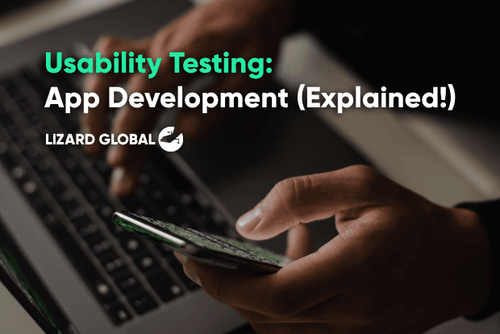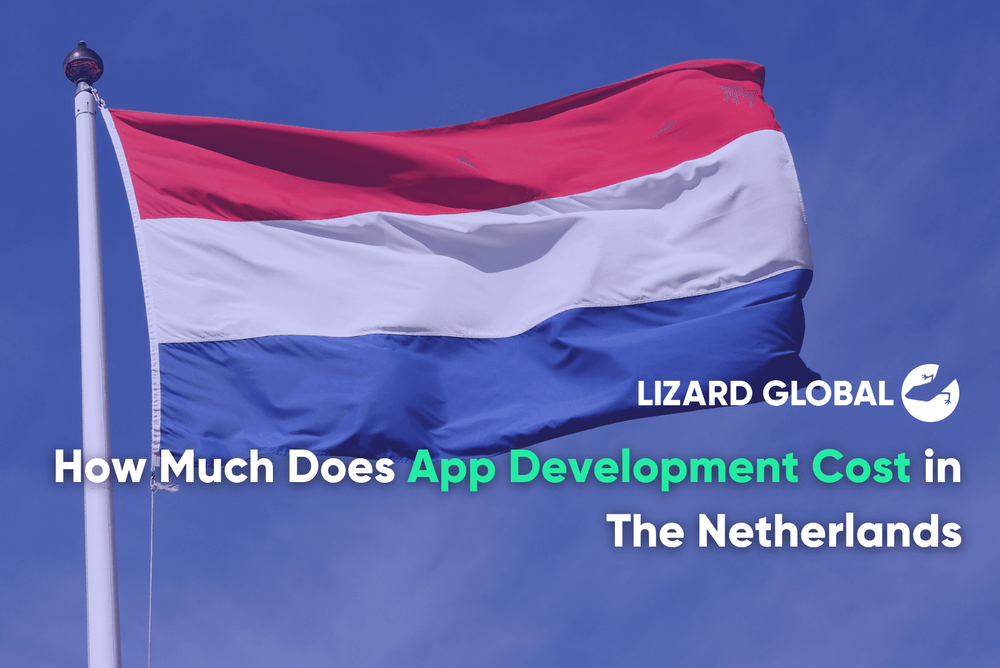How We Developed an MVP in Only One Sprint
Get the latest updates about our blog posts.
Subscribe so you don’t miss out!
Building an MVP in just one development sprint might sound like a daunting challenge. After all, how do you balance speed, functionality, and quality without overloading your team or stretching your resources too thin? While other company’s sprints could range from 4 to 8 weeks, at Lizard Global our sprints are 2 weeks. The key to building an MVP for us lies in having the right approach—focusing on the core essentials, setting clear priorities, and ensuring seamless collaboration across all stakeholders. With everyone aligned on the goal and a well-structured plan in place, rapid MVP development becomes not just possible, but highly effective.Key Takeaways
- Prioritization is Everything: Define the core functionality of your MVP and cut out any non-essential features to stay on track.
- Clear Internal and External Alignment Speeds Up Development: Ensuring that developer, designer, product owner, and clients are on the same page eliminates delays and miscommunication.
- Choosing the Right Third-Party Tools Saves Time: Pre-selecting APIs and external services minimizes technical roadblocks and helps you move faster.
- Quality and Speed Can Coexist: A structured QA process, combined with a minimal feature set, ensures high-quality output even on a tight timeline.
- Fast Learning Leads to Success: MVP development isn’t just about speed; it’s about how quickly you can start gathering feedback and iterating to build something truly valuable.
In this interview with Kaz, the Head of Product Owners and the Product Owner for this project, we take you behind the scenes of how our team successfully built an MVP in record time. From defining the must-have features to overcoming challenges and making quick iterations, we share the strategies and lessons that made it all happen. If you’re looking for insights on how to streamline your MVP development process and bring your idea to life fast—without sacrificing quality—keep reading.
How did you define the core functionality of the MVP without over-scoping the project?
We kept the MVP laser-focused on the most essential functionality: users go through onboarding, scan a product, and see its nutritional information. That’s it.
We knew additional features—like more detailed nutritional analysis or personalized recommendations—could be added in future sprints. The goal was to create something usable and valuable without overcomplicating the scope.
What were the key factors that allowed the team to successfully develop an MVP in just one sprint?
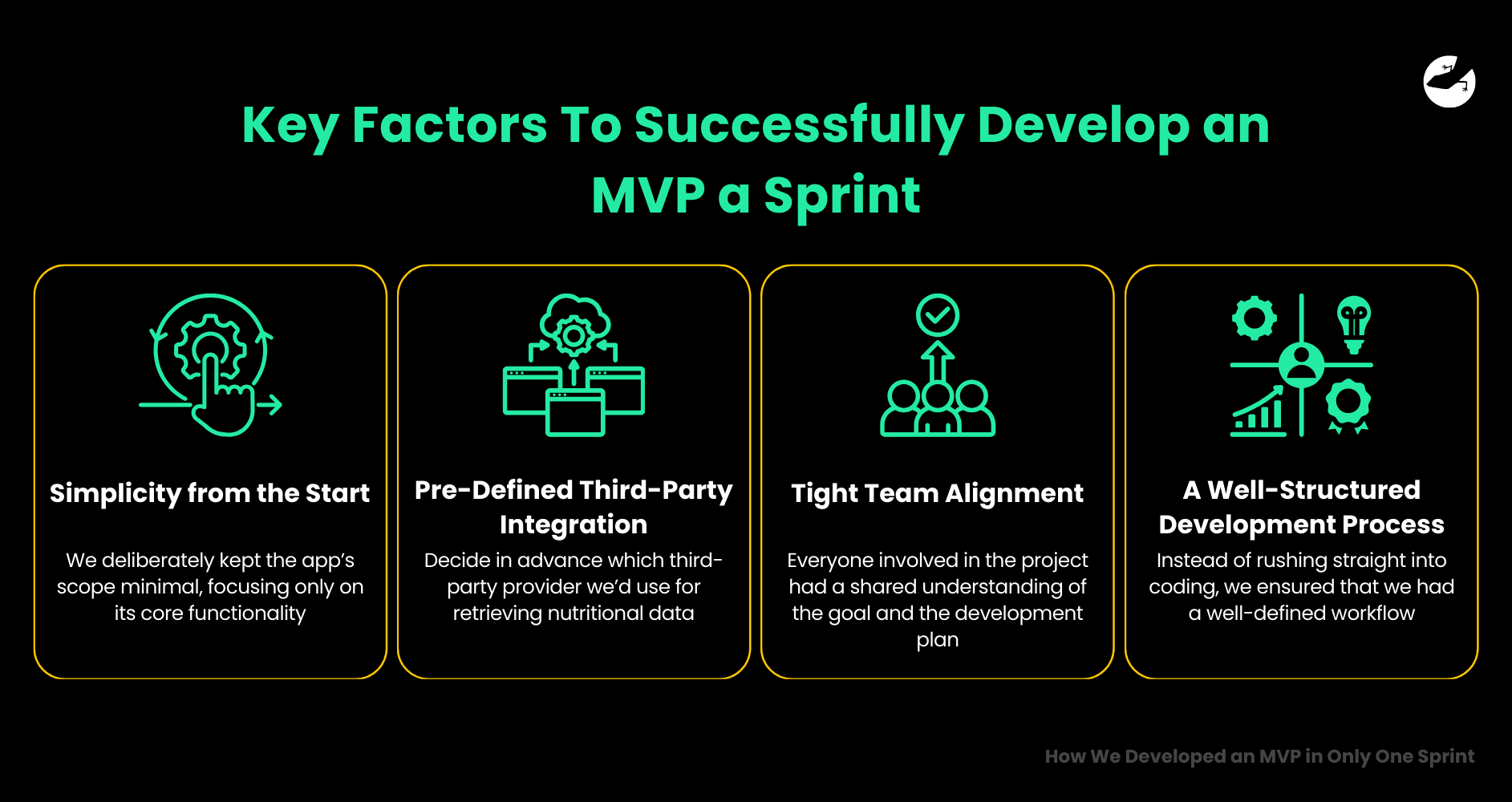
Several key factors contributed to our ability to develop a fully functional MVP in such a short timeframe.
Focusing on Goals and Not Getting Lost in the Details – We’ve learnt through our decade of experience that focusing too much on details brings about the risk of getting locked into a rigid scope that might need to change later.
Focusing on goals allows the team to understand “the why” behind what we're building, leading to faster and smarter decisions. Developers and designers have the room to make practical decisions based on the high-level goal rather than rigid requirements. If every small task needs detailed descriptions, designers and developers may hesitate, waiting for approval instead of making judgement calls.
Instead of perfecting every detail, it's more important to ship, gather feedback, and adjust based on actual user feedback.Simplicity from the Start – We deliberately kept the app’s scope minimal, focusing only on its core functionality. Since the app’s primary feature was allowing users to scan a product and view its nutritional information, there was no need for complex workflows or excessive features. This clarity made it easier for the entire team—developers, designers, product owner, and client—to align on what needed to be done without distractions or unnecessary discussions.
- Pre-Defined Third-Party Integration – One of the most time-consuming aspects of development can be choosing and integrating third-party services. Fortunately, we avoided this delay by deciding in advance which third-party provider we’d use for retrieving nutritional data.
Not only did we know which API we’d be working with, but we also had a clear understanding of its capabilities and limitations. This foresight eliminated uncertainty, prevented scope creep, and ensured a smooth integration process without unexpected roadblocks.
- Tight Team Alignment – Speed isn’t just about coding fast—it’s about making quick, informed decisions without back-and-forth delays. Everyone involved in the project had a shared understanding of the goal and the development plan. This allowed us to move forward efficiently, avoiding unnecessary meetings or last-minute changes that could have slowed us down.
- A Well-Structured Development Process – Instead of rushing straight into coding, we ensured that we had a well-defined workflow.
By establishing clear priorities, defining milestones, and following a structured development flow, we avoided common pitfalls like miscommunication, redundant work, or last-minute feature requests.
What risk factors did you anticipate before development, and how did you mitigate them?
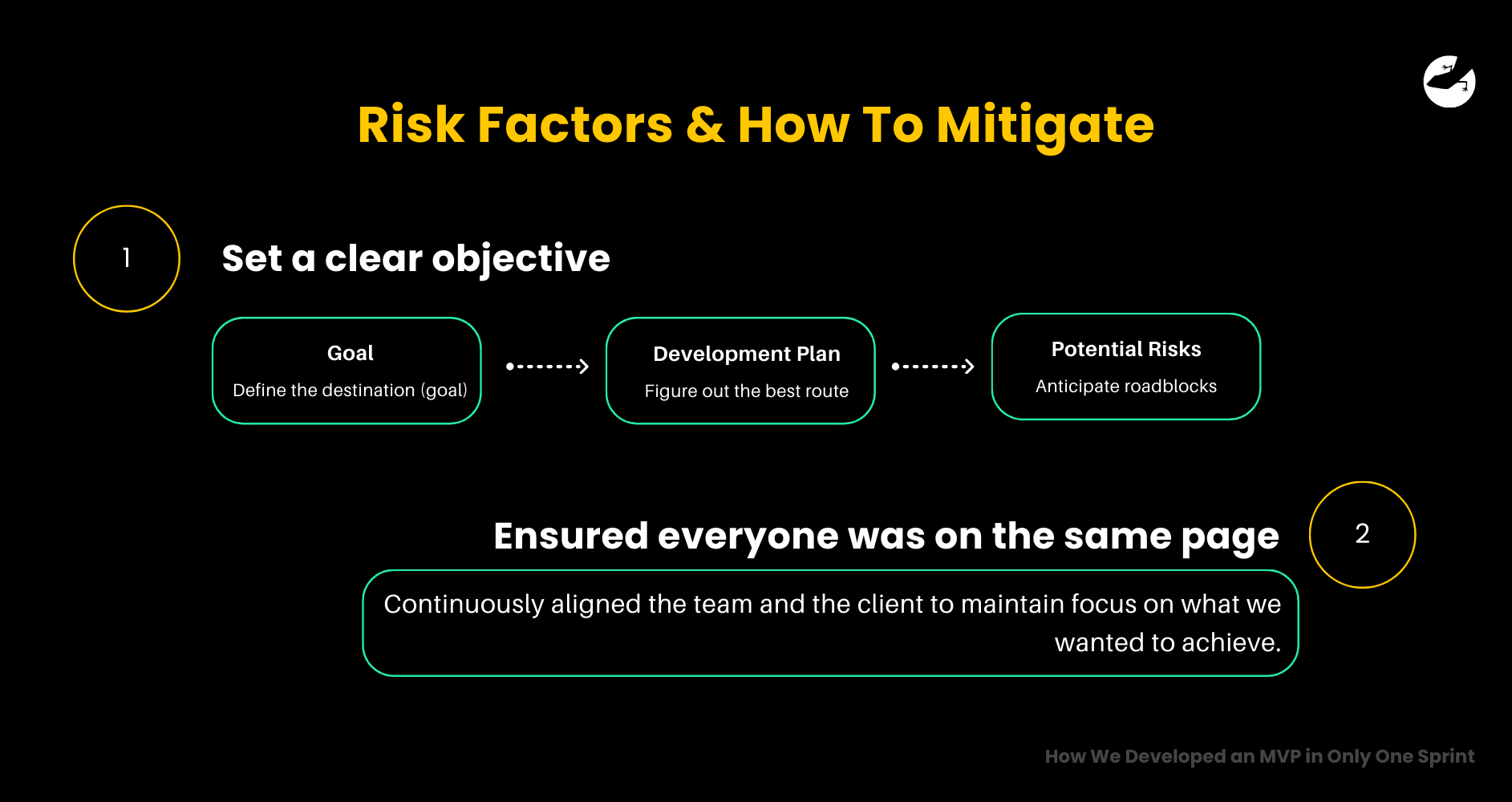
The biggest risk was not having alignment on the goal. Sometimes, clients or teams can get too focused on details and lose sight of the bigger picture.
To prevent this, we followed a structured process:
- Set a clear objective – We likened it to driving a car: first, define the destination (goal), then figure out the best route (development plan), and anticipate roadblocks (potential risks).
- Ensured everyone was on the same page – We continuously aligned the team and the client to maintain focus on what we wanted to achieve.
Want to find out how much it costs to build your dream app or web app?
How did you prioritize features to ensure the MVP was both functional and valuable within such a short timeframe?
We used the same approach as before—start with the goal and prioritize only what was absolutely necessary to achieve it.
Once we had that foundation, we could refine the details. This mindset ensured that we didn’t waste time on non-essential features in the sprint.
How did collaboration between product owner, developer, and designers contribute to the speed and efficiency of the MVP development?
Strong alignment across all teams was crucial. The developer, designer, and the product owner worked closely together to make quick decisions and avoid unnecessary delays.
By keeping open communication, we ensured that everyone was moving in the same direction, which significantly boosted efficiency.
How did you balance speed with quality assurance in such a short timeframe?
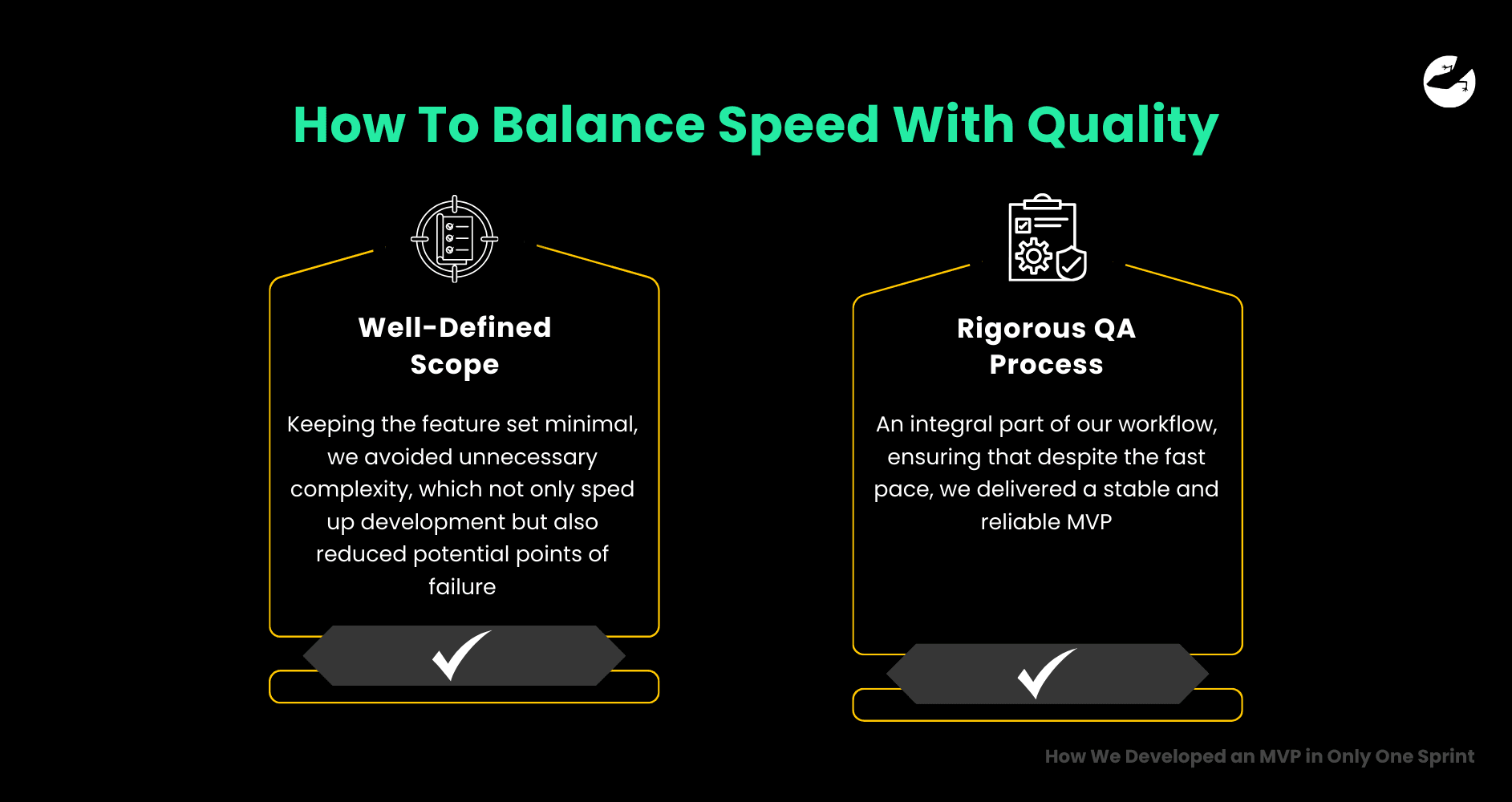
Speed and quality often seem like opposing forces, but with the right approach, they can go hand in hand. Our method was structured and efficient, ensuring that while we developed the MVP in record time, we didn’t compromise on reliability or user experience. Here’s how we did it:
- A Minimal, Well-Defined Scope – One of the biggest challenges in rapid development is managing scope creep. We tackled this by clearly defining the MVP’s core functionality from the start and sticking to it. The app was designed to do one thing exceptionally well—allow users to scan a product and retrieve its nutritional information. By keeping the feature set minimal, we avoided unnecessary complexity, which not only sped up development but also reduced potential points of failure.
- A Rigorous but Efficient QA Process – Quality assurance was an integral part of our workflow, ensuring that despite the fast pace, we delivered a stable and reliable MVP. Our testing process followed a structured approach:
- Developer Test Script – Before any manual testing, Kenny ran automated test scripts to catch early bugs and confirm the core functionality was working as expected.
- Local Testing by the Developer – Instead of pushing untested code, Kenny verified changes locally to ensure stability before moving forward.
- Manual Testing by QA – Once the development phase was complete, our QA team performed hands-on testing, checking usability, edge cases, and potential issues that automated scripts might miss.
- Client Testing Before Deployment – The final step involved testing by the client, ensuring that the app met their expectations and functioned correctly in real-world scenarios.
By combining a focused development approach, a clearly defined scope, and a structured QA process, we successfully maintained both speed and quality. This allowed us to launch an MVP that was not only built quickly but also delivered a seamless experience for users.
What adjustments or iterations were made immediately after the sprint based on initial feedback?
One major change was in onboarding. Initially, it was just an introduction to the app, but we realized users needed clearer guidance on how the product could impact them.
So, we refined it to be more focused on how nutritional information could be personalized—helping users understand if a product was suitable for them, rather than just providing raw data.
Now that the MVP is launched, what lessons did you learn from this experience, and how will they influence future product development?
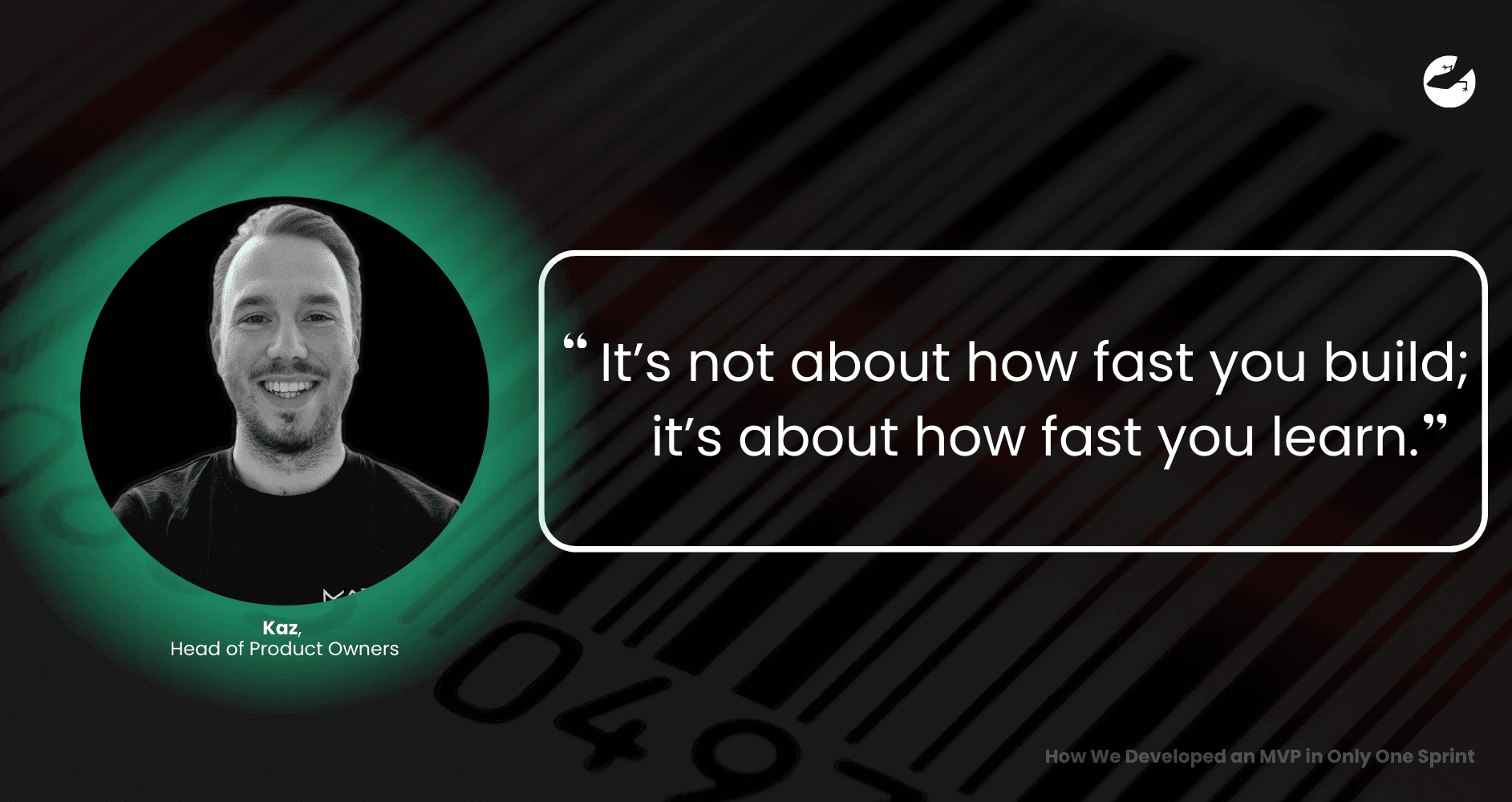
While the MVP is still evolving, the biggest takeaway is this: it’s not about how fast you build; it’s about how fast you learn.
The sooner you can validate your idea and gather real user feedback, the higher your chances of success. We built exactly what was needed and even had extra time because we learned quickly. Going forward, this experience reinforces the value of staying focused, aligning early, and iterating based on real-world insights.
Let Us Help You
At Lizard Global, we don’t just build products—we bring ideas to life with speed, precision, and a clear focus on delivering real value. Whether you need an MVP developed in record time, a full-scale SaaS platform, or expert guidance on navigating digital transformation, our team is here to make it happen. With years of experience in agile development, UX/UI design, and cutting-edge technology, we help businesses launch and scale with confidence.

We understand that time-to-market is crucial, and that’s why we prioritize efficiency without compromising quality. Our process ensures that every project stays aligned with your goals, free from unnecessary delays or scope creep. If you’re looking for a dedicated tech partner who can turn your vision into reality—quickly and effectively—let’s talk. Reach out today, and let’s build something amazing together! 🚀


